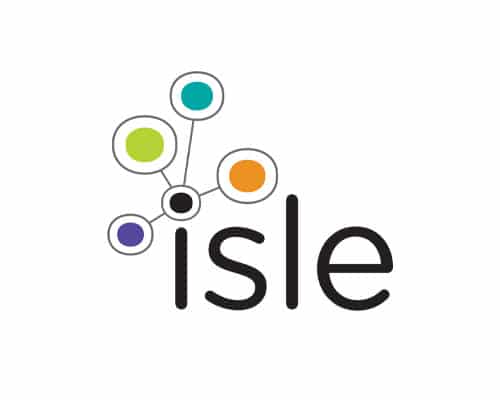Isle unravels’ the intricacies of storm overflows, exploring their impact on water quality, public health, and environmental integrity. Gain a comprehensive understanding of the challenges facing the industry, from overloaded sewers to the urgent need for nature-based sustainable solutions.
Tackling the Challenge of Storm Overflows: a Dive into Water Industry Resilience
The water industry finds itself entangled in a complex array of challenges, underscored by a notable erosion of public trust, particularly concerning storm overflows. From climate change and aging infrastructure to regulatory compliance and funding constraints, Isle recognizes the pressing need for innovative solutions to bolster water industry resilience both in the UK and globally.
In this blog we’ll delve into the basics of storm overflows and explore key challenges in the industry. We’ll explore how technological advancements and the integration of nature-based solutions can play a role in addressing these water industry challenges.
Understanding Storm Overflows
Combined sewers represent a critical juncture in the sewerage system where foul (sewage) and runoff (rainwater) converge into a single pipe, ultimately destined for the nearest treatment plant. Engineered to prevent sewage pipe backups and overwhelming treatment plants during periods of heavy rainfall or storms, storm overflows strategically redirect the amalgamated flow away from treatment plants and into the nearest water course. Unfortunately, the release from combined sewer overflows (CSOs) can introduce pollutants and pathogens into water bodies, potentially adversely impacting water quality, aquatic life and public health.
Unpacking the Data: Understanding the Dynamics of Overflows
The reported decrease in spills from 2021 to 2022 may initially suggest a positive trend within sewerage system design parameters. However, a closer analysis reveals that this reduction may largely stem from the below-average rainfall experienced last year.
Beneath this apparent improvement lies a more profound challenge: overloaded sewers. The aging infrastructure in the UK, much of which is at least fifty years old, grapples with the strain imposed by population growth, urbanization and intensified rainfall, ultimately working beyond its intended capacity. Research by Imperial College London points to the persistent under-capacity of wastewater treatment plants as the primary factor leading to more frequent and longer CSO spills.
Sewer Replacement Rates: A Looming Concern
Systems with distinct, separate systems for wastewater and for stormwater can enjoy efficiencies in treatment costs as the wastewater treatment works do not need to be designed to accommodate large increases in flow due to rainfall. Such systems also minimize the amount of untreated sewage entering local watercourses. Replacing them however, presents significant challenges. In England and Wales alone, combined sewers represent approximately 20% of the total sewer network, which spans over 500,000kms (which is the equivalent of 12.5x times the circumference of the Earth). Data from 2000 to 2008 suggests that the rate of sewer replacement during this period was only 1%.
The challenge becomes clear—unless substantial investments are injected into replacing both pipes and sewers, capacity issues will persist.
That said, tackling CSO challenges also means acknowledging that the repercussions of overhauling the entire system aren’t just financial – though it’s worth noting that the cost of separating wastewater and stormwater systems has been estimated at between £350b and £600b – but also encompass broader considerations. Although replacing aging infrastructure can be part of the solution, it primarily treats the symptom rather than the cause, as, despite its potential to mitigate sewage overflow, it simultaneously escalates the industry’s carbon footprint. Furthermore, it fails to confront the fundamental truth that if more rain was able to soak into the ground, the need for water treatment would diminish. As our urban landscapes evolve, so too must our approach to water infrastructure to ensure resilience against the evolving demands placed on it.
Storm overflows: The Legal Framework for Water Quality and Monitoring
The issue of storm overflows and water quality stands as a paramount concern within the water industry. The enactment of the Environment Act 21 in November 2021 mandates water utilities to vigilantly monitor water quality and reduce discharge from storm overflows into water courses. In alignment with this legislation, Defra’s Storm Overflows Discharge Reduction Plan requires urgent improvement for all storm overflows near designated bathing waters, with the objective of addressing 75% of overflows impacting ecologically sensitive nature sites.
All remaining storm overflows must meet these targets by 2050 regardless of location
Meanwhile, Defra’s Continuous Water Quality Monitoring Programme stipulates that sewerage undertakers should begin roll-out before 2025 with full monitoring of statutory assets due to be completed by 2035.
Enhancing Water Quality Monitoring
Improving – or even beginning – water quality monitoring for UK water and sewage companies is hindered by aging infrastructure, requiring significant investments in sensor technology for real-time data collection. The unpredictable nature of CSO spills, whether diluted by rainwater during storms or concentrated during asset failures or incidents, presents unique challenges to consistent water quality monitoring. This underscores the need to explore innovative monitoring techniques to mitigate environmental impact.
At Isle, we’re at the forefront of collaborating with water and sewage companies to address these critical issues.
Our team has helped to outline a vision to help the UK achieve zero uncontrolled discharges by 2050. This involved a comprehensive assessment of current technologies, solutions and approaches aimed at reducing discharges of untreated sewage. Furthermore, we have contributed to enhancing asset and network resilience for a client in the water industry by conducting a horizon scan of screens designed to prevent debris from entering wastewater treatment works.
Our recent collaboration with UK Water Industry Research (UKWIR) resulted in a report that scrutinizes treatment options for storm overflows. Here, we not only reviewed commercially available treatment options but also analyzed their costs and benefits within the framework of regulatory requirements. This analysis was instrumental in understanding how different treatment technologies could be employed in the water sector. Additionally, we developed a bespoke cost model empowering users to determine the most viable suitable solutions for different sites, including a comparative evaluation of costs and carbon footprints.
Reducing Rainfall’s Impact: Embracing Nature-Based Solutions
In the quest to tackle wastewater management and pollution challenges, there is growing interest in nature-based solutions (NBS) alongside system replacement and technological approaches. These approaches strive not only for efficient wastewater treatment but also aim to foster environmental conservation, enhancing biodiversity and reducing carbon emissions.
For example, employing constructed wetlands or reed beds is an effective strategy for wastewater treatment. These systems excel at removing pollutants like phosphorus, microplastics and organic compounds from water, markedly decreasing bacterial contamination into the environment. The wetlands can be especially effective in areas prone to stormwater overflows due to groundwater infiltration.
Developing wetlands for wastewater treatment offers a natural way to remove pollutants before effluent is discharged into water courses. This is a particularly low carbon solution that benefits the environment and local communities by creating habitats for wildlife and improving the overall quality of water bodies.
Collaborating with farmers and agricultural stakeholders to store water on farmland represents a larger, catchment-scale approach. By planting trees, restoring peatlands, enhancing soil health, and creating ponds and lakes, this strategy helps replenish groundwater during the summer while diluting residual pollution and offering flood protection.
Finally, Sustainable Urban Drainage Systems (SUDS) help manage surface water sustainably, emulating natural water drainage processes and minimizing environmental impacts. This form of green infrastructure has proved effective at curbing surface runoff and improving water quality, marking out SUDS and other nature-based solutions as essential for alleviating pressure on existing infrastructure.
Charting a Course for Resilience
The need to reduce storm overflows and associated implications for water quality, public health and environmental integrity requires a multifaceted and innovative approach. We’ve cast a spotlight on the challenges, from the UK’s aging infrastructure to regulatory pressures to the urgent need for sustainable, resilient solutions. Technology offers a part of that solution, allowing for more efficient monitoring and management of water resources.
The moment calls for collective action, investment, and a strategic shift towards sustainable, nature-based solutions. It’s a pivotal juncture where collaboration and innovation are paramount in fortifying the water industry against evolving challenges.
We invite you to join forces with us in addressing these challenges head-on. Connect with Karyn Georges for collaboration opportunities.

